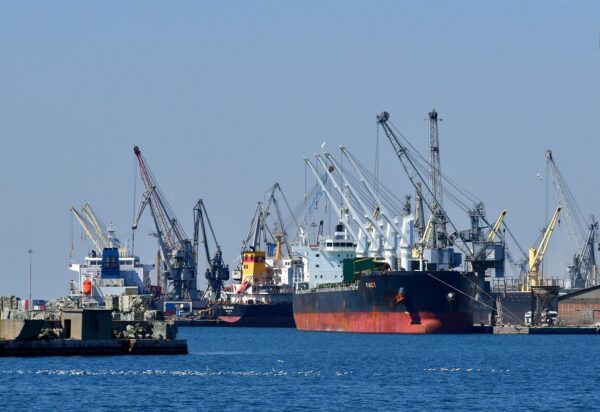In today’s connected world, reliable internet access is no longer a luxury but a necessity – even at sea. The maritime industry relies on robust internet connection for everything from crew welfare to operational efficiency and critical communications. However, maintaining reliable and cost-effective internet access at sea presents unique challenges. That’s why having different internet connections and a smart switch matters.
Let’s look at the types of internet used at sea, how they work, and why combining them is helpful. We’ll also cover how companies can save money by using the right internet based on location and needs.
Types of maritime internet connections
Maritime vessels often use a mix of internet technologies, including maritime satellite communication, to ensure a continuous internet connection.
VSAT satellite systems
VSAT satellite systems have long provided internet at sea using geostationary satellites. These systems usually provide speeds from 256 Kbps to 20 Mbps, costing $1,500 to $20,000 a month based on usage. While they offer global coverage, latency can be an issue because of the long distance to the satellites. VSAT supports business, emergency, and monitoring tasks, keeping ships connected even sea.
Starlink (low earth orbit satellites)
Starlink, developed by SpaceX, leverages a constellation of low Earth orbit satellites to deliver high-speed, low-latency internet. Starlink provides high-speed connection ranging from 50 to 250 Mbps, with monthly costs between $250 and $5,000, depending on the service plan. Great for remote areas or while moving, though global coverage is still growing.
Starlink is changing how vessels connect by offering faster speeds and less delay. It makes communication more reliable, helps with cloud access, and supports crew wellbeing. Crew members can stream videos, video call family, and enjoy entertainment, boosting morale and life quality onboard.
LTE cellular networks
For vessels close to shore, LTE cellular networks provide a cost-effective solution. Speeds are comparable to land-based LTE, typically between 10 Mbps and 100 Mbps, and plans range from $100 to $1,000 per month per SIM. However, LTE is limited to a range of about 5 to 10 miles offshore.
Coastal vessels and ferries rely on LTE for its low cost and reliability, ensuring smooth navigation, logistics tracking, and crew communication. Businesses in this range can lower connectivity costs by using LTE instead of satellite solutions.
Ship-to-shore bridged Wi-Fi systems
When docked or in port, ships can connect to land-based networks using ship-to-shore bridged Wi-Fi systems. This option provides fast, reliable internet over 100 Mbps and is typically the cheapest, as it uses existing infrastructure.
Many ports now provide Wi-Fi for ships, offering fast access to networks, cloud systems, and crew apps. Cruise ships benefit from Wi-Fi while docked, giving passengers and crew fast, affordable internet compared to satellite options.
The benefits of using multiple internet connections
Relying on a single internet connection type can lead to high costs, limited coverage, or inconsistent performance. Combining multiple connections, however, offers numerous advantages.
Reliability through redundancy
Reliability improves significantly when different technologies are used in tandem, as each excels in different scenarios. VSAT connects vessels at sea, Starlink provides fast internet in remote areas, and LTE and Wi-Fi are cheaper near shore or in port. This ensures that vessels remain connected even if one service experiences outages. Having redundancy is particularly important for critical maritime operations such as navigation, cargo management, and safety protocols, where seamless online access is essential.
Cost optimization
Cost optimization is another major benefit. Ships can switch to the most cost-effective connection available based on their location.
Near shore, LTE can replace expensive satellite bandwidth. When in port, bridged Wi-Fi can further reduce costs. You can turn off VSAT or Starlink during long stays in port or dry dock to save on costs. Many maritime businesses save money by using automated systems that activate the most cost-efficient service when needed.
Improved performance
Performance improves with an automatic switching gateway that picks the best connection based on speed, latency, and signal strength. This offers faster internet, lower latency for video calls and virtual healthcare, and smooth network changes.
Enhanced efficiency allows real-time monitoring, easy communication between ship and shore, and access to cloud apps and data. Cargo vessels, oil tankers, and luxury yachts can maintain smooth communications, navigation, and cybersecurity anywhere.
How an automatic switching gateway works
An automatic switching gateway is the cornerstone of a multi-connection setup. This device scans available networks like VSAT, Starlink, LTE, and Wi-Fi, checking their speed, latency, and signal strength.
For example, when a ship enters port, the gateway focuses on Wi-Fi for its speed and low cost. As the ship moves closer to shore but out of Wi-Fi range, it switches to LTE for reliable, cost-effective internet connection.
In remote waters, Starlink provides high-speed, low-latency performance, ensuring seamless operations even in isolated areas.
Finally, VSAT serves as a reliable fallback option, maintaining network coverage where other services are not available. The gateway minimizes disruptions during network changes, keeping sessions and apps running smoothly, no matter where the ship is.
Custom Priority Settings
Advanced gateways allow adjustment to prioritize usage based on business needs. A research vessel needs fast data connections, while a fishing fleet saves costs by using satellite only for essential communications
Cost-saving strategies for extended port stays
When a ship docks for maintenance or dry dock, it creates great opportunities to cut internet costs. You can temporarily suspend satellite services like VSAT and Starlink to avoid paying for unused services. Bridged Wi-Fi connects the ship to the office network or local ISPs, providing fast, reliable, and cost-effective internet connection. Monitoring data consumption helps you avoid exceeding LTE or Wi-Fi plan limits, further optimizing expenses.
By implementing these strategies, companies can reduce operational costs without sacrificing connectivity, making extended port stays more financially efficient. Many fleet operators set automated schedules to deactivate high-cost services once a vessel is stationary for a specific period, reducing unnecessary expenditures.
Conclusion
In the maritime industry, maintaining reliable and cost-effective internet connection is crucial for both operational efficiency and crew satisfaction. By using VSAT, Starlink, LTE, and ship-to-shore Wi-Fi, vessels can maintain constant online access wherever they are. An automatic switching gateway simplifies this process, providing seamless transitions and cost optimization.
Whether you manage a fleet or a single vessel, investing in a multi-connection setup with smart switching is a smart choice. Improves operations, cuts costs, and ensures reliable maritime communication – keeping you connected at sea. For more information on maritime satellite communications, please read our blog.
Love This Article? Share It!
Cloud computing empowers businesses with flexibility, scalability, and cost savings, transforming operations across industries. This guide explores its advantages over traditional IT infrastructure and how it drives efficiency.
Reliable internet is crucial for maritime operations. Learn how multiple connection types and automatic switching gateways can optimize performance and reduce costs.
With rising cyber threats, accounting firms must prioritize securing sensitive financial data. By implementing strong security measures, training staff, and staying updated on risks, firms can protect themselves and clients from attacks.
Hybrid work offers flexibility but also brings cybersecurity risks. Learn how to simplify access, detect threats, and implement strong security measures.
AI can help SMBs streamline operations, make data-driven decisions, and enhance customer experiences. However, it also introduces challenges like data privacy risks, security concerns, and integration issues that businesses need to manage carefully.
Learn how implementing SPF, DKIM, and DMARC protocols can protect your business from phishing, spoofing threats, and improve your email deliverability, ensuring your messages reach the right inbox every time.
Ransomware poses a major risk to businesses, causing costly downtime and damage to your reputation. Strengthen your defense and ensure continuity with proactive security and effective recovery strategies.
Starlink’s high-speed, low-latency internet is challenging VSAT’s dominance. This blog explores their differences and impact on maritime communication.
Choosing between MSPs and Break-Fix IT companies affects your business’s efficiency and growth. Our blog outlines the pros and cons to help you select the model that best aligns with your goals.
We compare Microsoft 365 and Google Workspace across key areas like cybersecurity, productivity, cloud storage, user-friendliness, administration, and cost. Find out which suite best meets your business needs.
STAY IN THE LOOP
Subscribe to our free newsletter.












